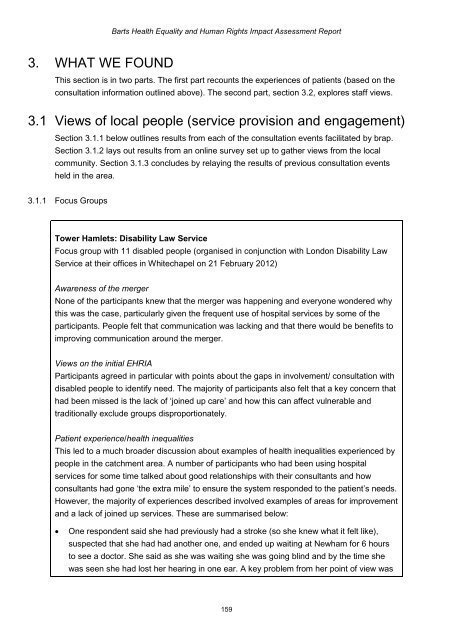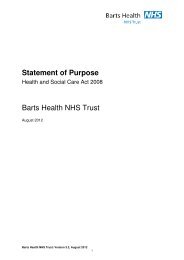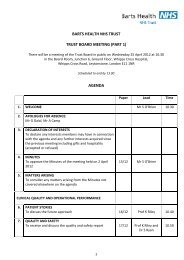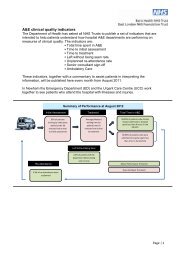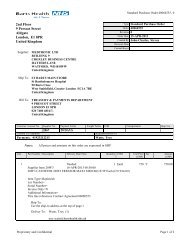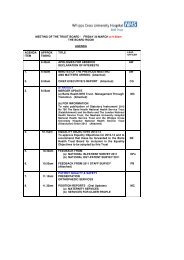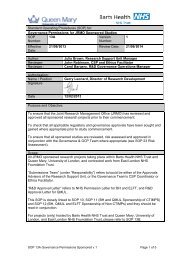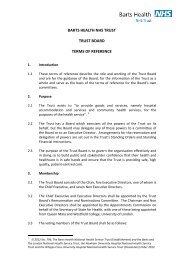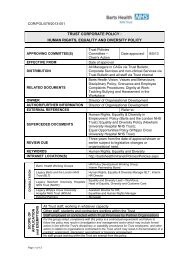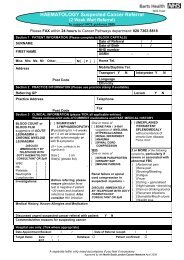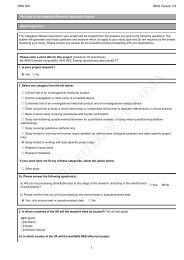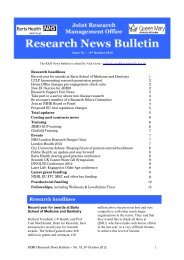Barts Health Equality and Human Rights Impact Assessment Report
Barts Health Equality and Human Rights Impact Assessment Report
Barts Health Equality and Human Rights Impact Assessment Report
- No tags were found...
You also want an ePaper? Increase the reach of your titles
YUMPU automatically turns print PDFs into web optimized ePapers that Google loves.
<strong>Barts</strong> <strong>Health</strong> <strong>Equality</strong> <strong>and</strong> <strong>Human</strong> <strong>Rights</strong> <strong>Impact</strong> <strong>Assessment</strong> <strong>Report</strong>3. WHAT WE FOUNDThis section is in two parts. The first part recounts the experiences of patients (based on theconsultation information outlined above). The second part, section 3.2, explores staff views.3.1 Views of local people (service provision <strong>and</strong> engagement)Section 3.1.1 below outlines results from each of the consultation events facilitated by brap.Section 3.1.2 lays out results from an online survey set up to gather views from the localcommunity. Section 3.1.3 concludes by relaying the results of previous consultation eventsheld in the area.3.1.1 Focus GroupsTower Hamlets: Disability Law ServiceFocus group with 11 disabled people (organised in conjunction with London Disability LawService at their offices in Whitechapel on 21 February 2012)Awareness of the mergerNone of the participants knew that the merger was happening <strong>and</strong> everyone wondered whythis was the case, particularly given the frequent use of hospital services by some of theparticipants. People felt that communication was lacking <strong>and</strong> that there would be benefits toimproving communication around the merger.Views on the initial EHRIAParticipants agreed in particular with points about the gaps in involvement/ consultation withdisabled people to identify need. The majority of participants also felt that a key concern thathad been missed is the lack of ‘joined up care’ <strong>and</strong> how this can affect vulnerable <strong>and</strong>traditionally exclude groups disproportionately.Patient experience/health inequalitiesThis led to a much broader discussion about examples of health inequalities experienced bypeople in the catchment area. A number of participants who had been using hospitalservices for some time talked about good relationships with their consultants <strong>and</strong> howconsultants had gone ‘the extra mile’ to ensure the system responded to the patient’s needs.However, the majority of experiences described involved examples of areas for improvement<strong>and</strong> a lack of joined up services. These are summarised below:One respondent said she had previously had a stroke (so she knew what it felt like),suspected that she had had another one, <strong>and</strong> ended up waiting at Newham for 6 hoursto see a doctor. She said as she was waiting she was going blind <strong>and</strong> by the time shewas seen she had lost her hearing in one ear. A key problem from her point of view was159


